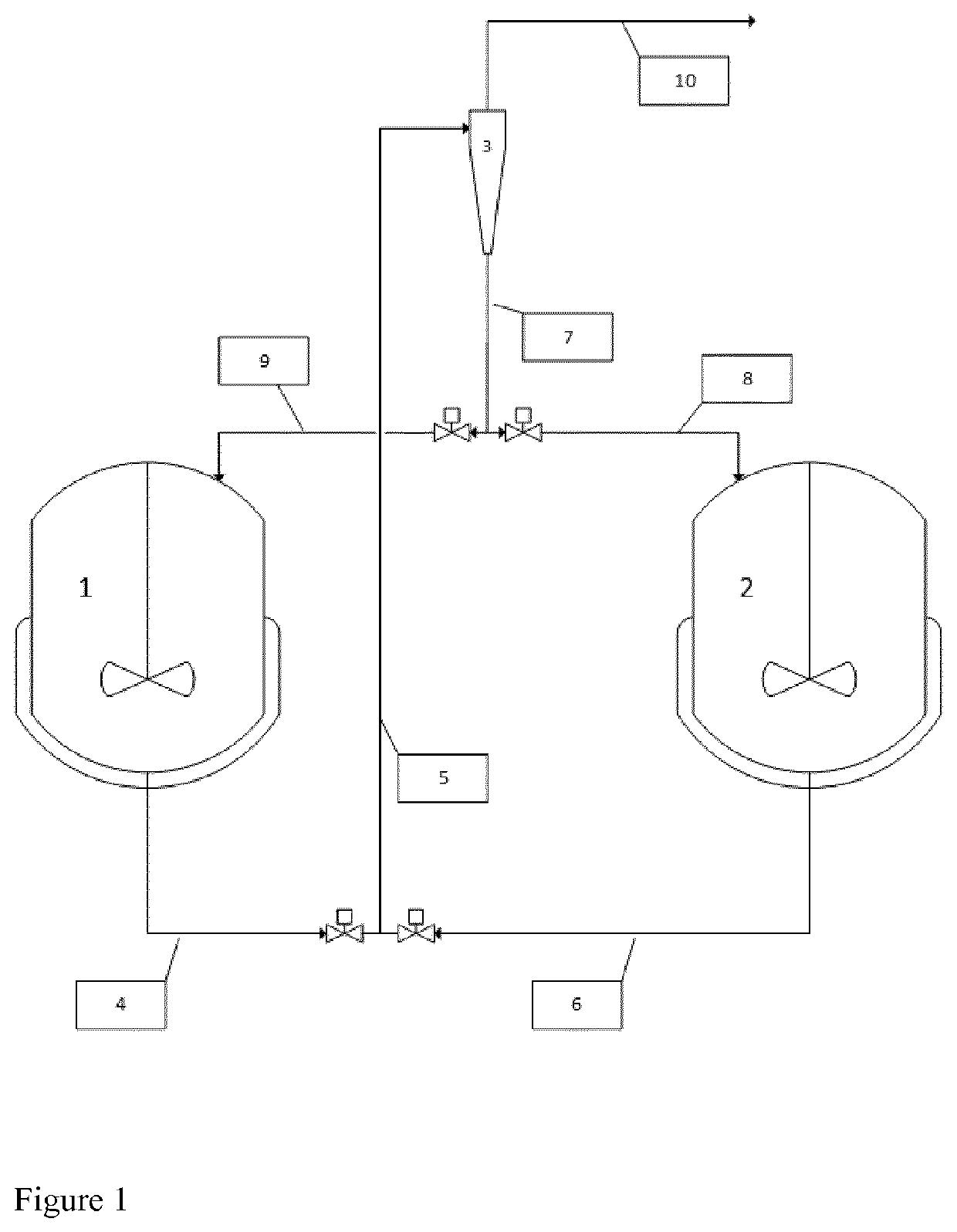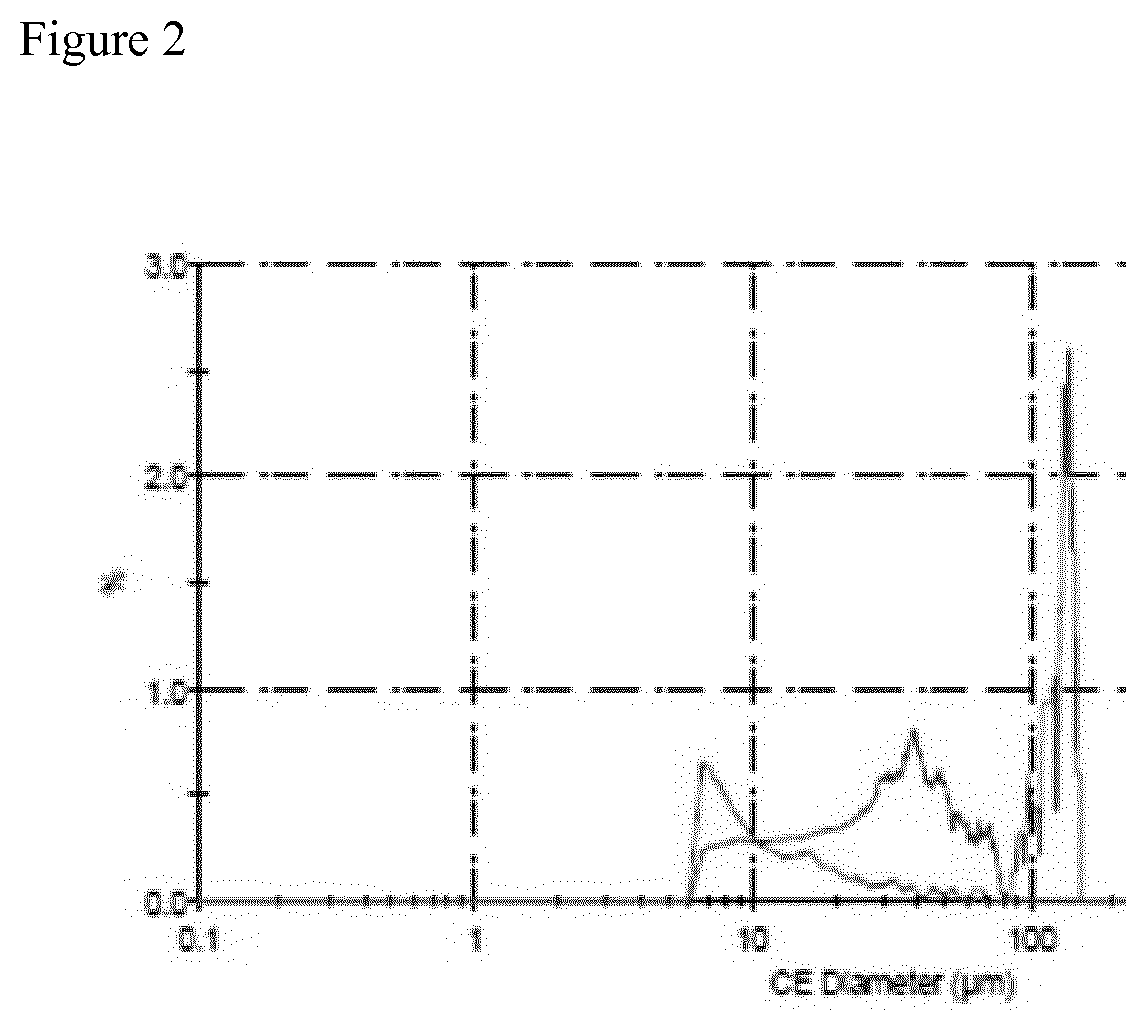Washing process
a technology of solid olefin and washing process, which is applied in the direction of sedimentation separation, chemical/physical processes, centrifugal force sedimentation separation, etc., can solve the problems of particle breakage or agglomeration, filtration isn't an ideal solution, and the settling step takes a lot longer
- Summary
- Abstract
- Description
- Claims
- Application Information
AI Technical Summary
Benefits of technology
Problems solved by technology
Method used
Image
Examples
example 1
[0230]Preparation of ZN catalyst by emulsion-solidification method
Raw Materials
[0231]TiCl4 (CAS 7550-45-90) was supplied by commercial source.
20% solution in toluene of butyl ethyl magnesium (Mg(Bu)(Et)), provided by Crompton
2-ethylhexanol, provided by Merck Chemicals
3-Butoxy-2-propanol, provided by Sigma-Aldrich
bis(2-ethylhexyl)citraconate, provided by Contract Chemicals
Viscoplex® 1-254, provided by Evonik
Heptane, provided by Chevron
Preparation of Mg Complex
[0232]3.4 litre of 2-ethylhexanol and 810 ml of propylene glycol butyl monoether (in a molar ratio 4 / 1) were added to a 20 l reactor. Then 7.8 litre of a 20% solution in toluene of BEM (butyl ethyl magnesium) provided by Crompton GmbH was slowly added to the well stirred alcohol mixture. During the addition the temperature was kept at 10° C. After addition the temperature of the reaction mixture was raised to 60° C. and mixing was continued at this temperature for 30 minutes. Finally, after cooling to room temperature the obtain...
example 2
[0237]A hydrocyclone with cut size d50 of 13 μm was purchased from Krebs. The particles smaller than 13 μm substantially go to the waste stream from the top of the cyclone. A trial was executed using the hydrocyclone, which was connected to the catalyst preparation reactor unit 1 with connecting lines 4 and 5. Catalyst was prepared according to the procedure as described in example 1.
[0238]Separation in the hydrocyclone was effected in less than 25 minutes. Referring to the FIG. 1, in the hydrocyclone unit 3, the solid catalyst particles and liquid medium are separated by transferring the mixture from reactor 1 through the hydrocyclone. The bottom stream is removed from the hydrocyclone and transferred to reactor 2. Pressure difference between inlet-overhead was 0.7 bar.
[0239]The sampling showed cut size of being about the desired 13 μm (FIG. 2) when analysed using Malvern particle size analysis.
catalystslurryInletinputoverheadinletoverheadpressureTotal run timedensitydensityflow ra...
example 3
f the Solid Particles
[0240]In example 3, the solid catalysts particles are prepared according to the procedure as described in example 1. They are then subject to a first hydrocyclone separation as described in example 2. As further illustrated in FIG. 1, catalyst was prepared in reactor 1 and at the same time toluene wash liquid was dosed to the reactor 2 and heated up to required washing temperature, where upon a 1st toluene wash is performed due to the presence of the toluene within reactor 2.
[0241]Overhead flow from the hydrocyclone, which is primarily mother liquor, is directed to waste. Separation / Concentration efficiency is adjusted by controlling the hydrocyclone split (overhead flow fraction of the inlet flow) by flow measurements and control valves.
[0242]After the 1st toluene wash is complete in reactor 2, catalyst slurry is concentrated again by transferring it through the hydrocyclone 3. Washing solvent can be removed overhead and sent to waste. Bottom particles are reco...
PUM
| Property | Measurement | Unit |
|---|---|---|
| Temperature | aaaaa | aaaaa |
| Size | aaaaa | aaaaa |
| Particle size | aaaaa | aaaaa |
Abstract
Description
Claims
Application Information
 Login to view more
Login to view more - R&D Engineer
- R&D Manager
- IP Professional
- Industry Leading Data Capabilities
- Powerful AI technology
- Patent DNA Extraction
Browse by: Latest US Patents, China's latest patents, Technical Efficacy Thesaurus, Application Domain, Technology Topic.
© 2024 PatSnap. All rights reserved.Legal|Privacy policy|Modern Slavery Act Transparency Statement|Sitemap


